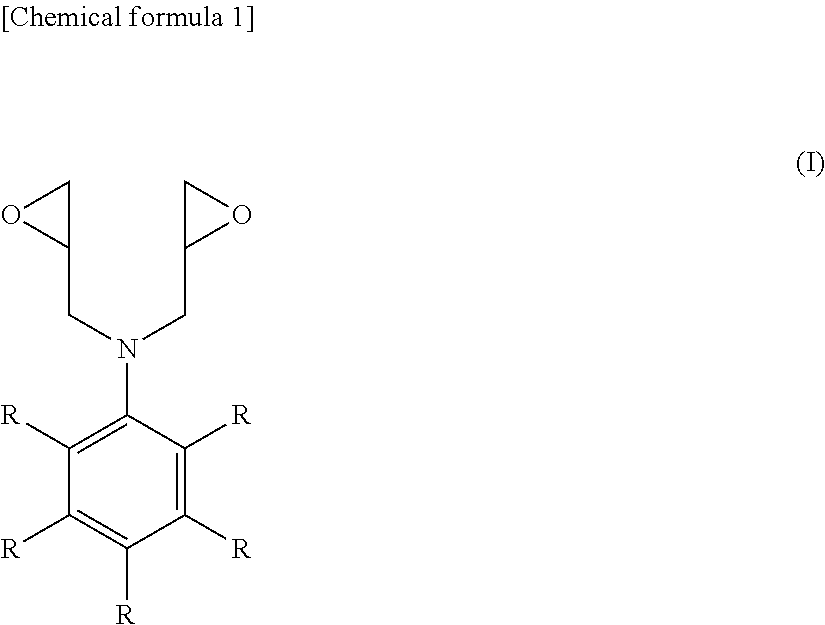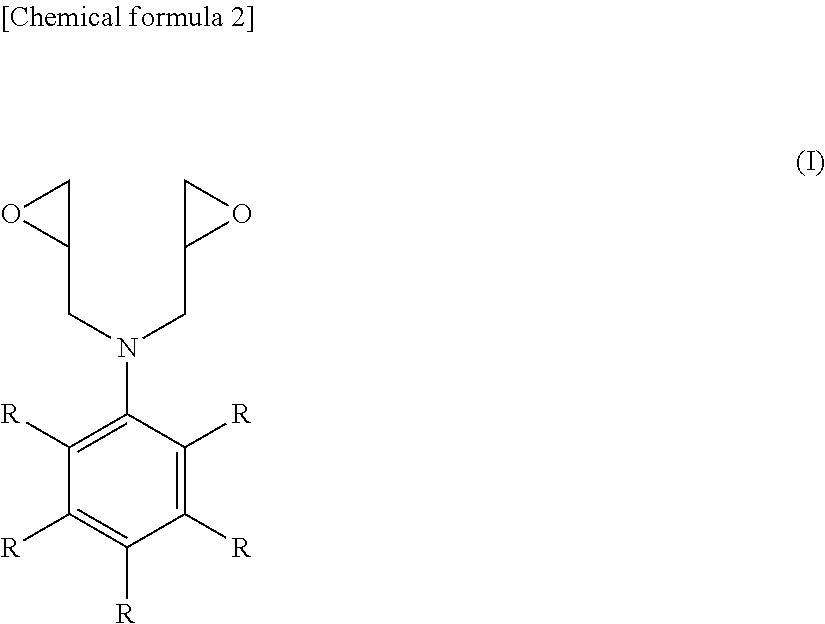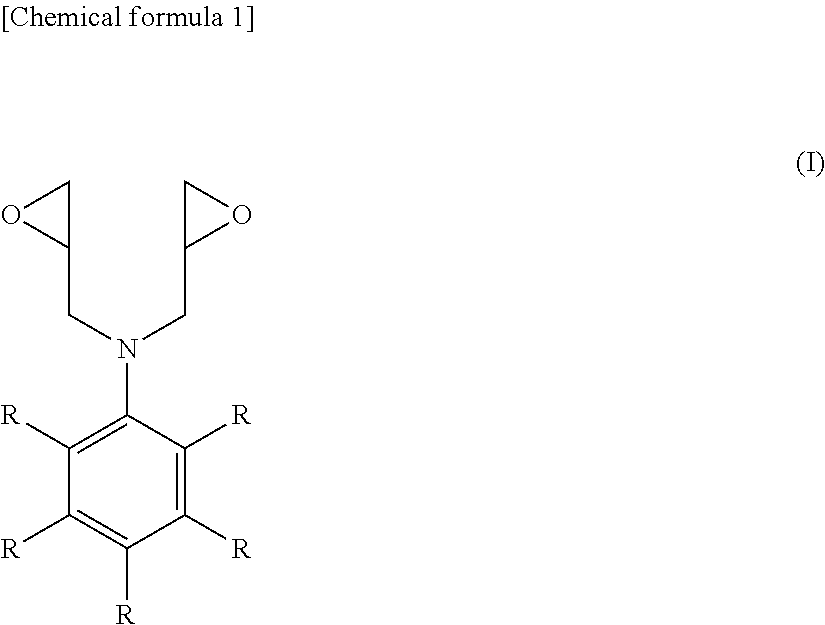Epoxy resin composition, prepreg and fiber-reinforced composite material
a technology of epoxy resin and composite material, applied in the direction of synthetic resin layered products, transportation and packaging, chemistry apparatus and processes, etc., can solve the problems of void formation, degradation of processability, and decline of appearance quality due to void formation, and achieve excellent impact resistance, heat resistance and elastic modulus, excellent heat resistance and static strength properties, and excellent toughness.
- Summary
- Abstract
- Description
- Claims
- Application Information
AI Technical Summary
Benefits of technology
Problems solved by technology
Method used
Image
Examples
examples
[0124]The epoxy resin composition of this invention is explained below in more detail in reference to examples. The following resins were used as raw materials for obtaining the resin compositions of the respective working examples.
[Aa] Epoxy resins
[0125]Epoxy resin having an oxazolidone ring structure, XAC4151 (produced by Asahi Kasei Epoxy Co., Ltd.)
[0126]Epoxy resin having an oxazolidone ring structure, AER4152 (produced by Asahi Kasei Epoxy Co., Ltd.)
[0127]Naphthalene type epoxy resin (“Epiclon (registered trademark”) HP4032D, produced by Dainippon Ink and Chemicals, Inc.)
[0128]Naphthalene type epoxy resin (“Epiclon (registered trademark”) HP4700, produced by Dainippon Ink and Chemicals, Inc.)
[0129]Naphthalene type epoxy resin (“Epiclon (registered trademark”) HP4770, produced by Dainippon Ink and Chemicals, Inc.)
[0130]Naphthalene type epoxy resin (NC7300 (produced by Nippon Kayaku Co., Ltd.))
[0131]Dicyclopentadiene type epoxy resin (“Epiclon” (registered trademark) HP7200 (prod...
working examples 25 to 36
, and Reference Working Examples 8 to 13
[0164]The viscosity of an epoxy resin composition was obtained by using and simply heating parallel plates with a diameter of 40 mm at a heating rate of 2° C. / min and measuring at a frequency of 0.5 Hz and at a gap of 1 mm using a dynamic viscoelasticity measuring apparatus (ARES: produced by TA Instruments).
[0165](3) Bending Modulus of Elasticity and Deflecting in Bending of a Cured Resin
[0166]The epoxy resin composition prepared in (1) was defoamed in vacuum, and injected into a mold set to have a thickness of 2 mm using a 2 mm thick “Teflon (registered trademark”) spacer. In the case where diaminodiphenylsulfone was used as the epoxy curing agent, curing was performed at a temperature of 180° C. for 2 hours, and in the case where dicyandiamide was used as the epoxy curing agent, curing was performed at a temperature of 130° C. for 2 hours, to obtain a 2 mm thick cured resin. From the obtained cured resin plate, a 10 mm wide and 60 mm long s...
reference example 1
[0206]Zero point zero five part by mass of tetrabutylammonium bromide was added to 100 parts by mass of a bisphenol F type epoxy resin (Epiclon 830), and with stirring the mixture was heated to 175° C. Then, 20 parts by mass of toluene diisocyanate were supplied, taking 3 hours, and the mixture was further stirred at 175° C. for 4 hours, to obtain an isocyanate modification product of the bisphenol F type epoxy resin.
[0207]Further, a phenol novolak type epoxy resin (jER152) and toluene diisocyanate were used as raw materials to obtain an isocyanate modification product of the novolak type epoxy resin likewise.
[0208]Furthermore, MR-100 as the polyisocyanate compound was used as a raw material and YD128 was used as a bisphenol A type epoxy resin, to obtain a polyisocyanate modification product of the bisphenol A type epoxy.
PUM
| Property | Measurement | Unit |
|---|---|---|
| wt % | aaaaa | aaaaa |
| glass transition temperature | aaaaa | aaaaa |
| mass % | aaaaa | aaaaa |
Abstract
Description
Claims
Application Information
 Login to View More
Login to View More - R&D
- Intellectual Property
- Life Sciences
- Materials
- Tech Scout
- Unparalleled Data Quality
- Higher Quality Content
- 60% Fewer Hallucinations
Browse by: Latest US Patents, China's latest patents, Technical Efficacy Thesaurus, Application Domain, Technology Topic, Popular Technical Reports.
© 2025 PatSnap. All rights reserved.Legal|Privacy policy|Modern Slavery Act Transparency Statement|Sitemap|About US| Contact US: help@patsnap.com



